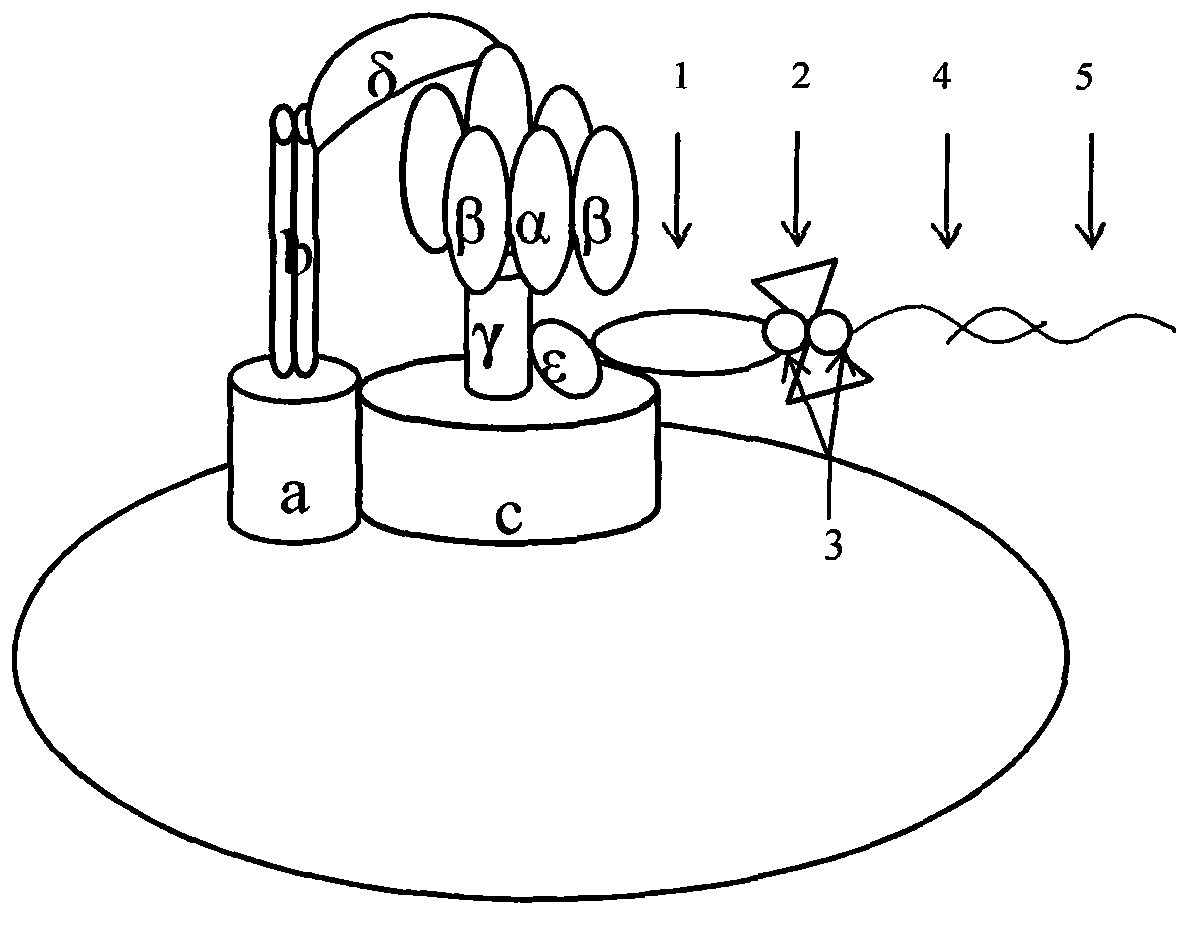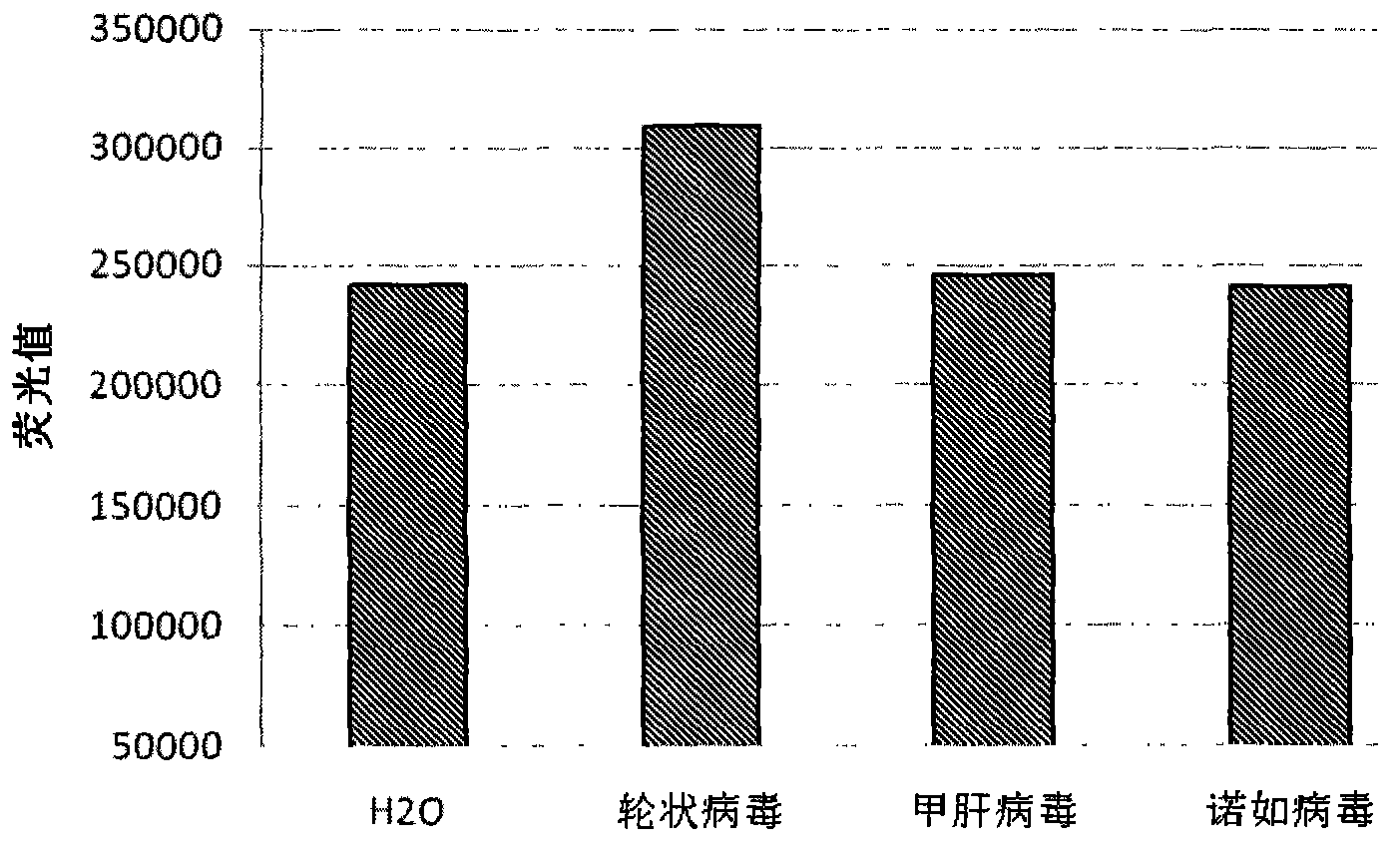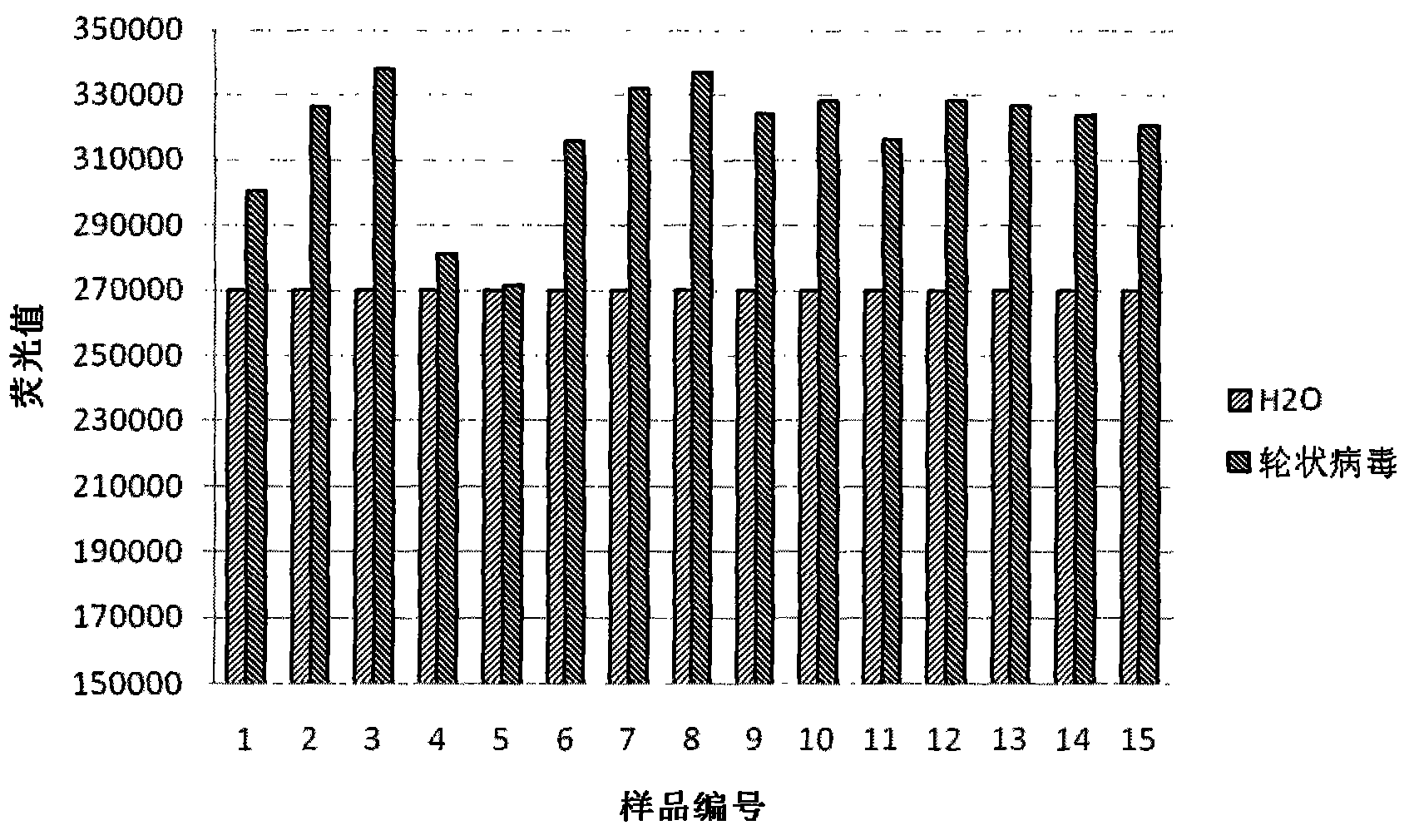Molecular motor biosensor kit for detecting rotavirus
A rotavirus and kit technology, applied in the field of rapid detection of foodborne viruses, can solve the problems of low specificity and sensitivity, long time required, and high detection cost, and achieve strong specificity, high sensitivity, and high-throughput detection. Effect
- Summary
- Abstract
- Description
- Claims
- Application Information
AI Technical Summary
Problems solved by technology
Method used
Image
Examples
Embodiment Construction
[0007] A specific nucleic acid probe 5'-AGCACAACATTATAATCACAGTATAGTTTGGGTCGA-3' was designed according to the rotavirus VP7 gene, wherein the 5' of the probe was labeled with biotin. The probe is connected to the molecular motor through a biotin antibody, and the RNA of the sample to be tested can be detected by using the molecular motor biosensor. When the sample is rotavirus RNA, the fluorescence value of the detection system will change significantly. This change can judge the sample as positive. For this reason, we designed a kit that can detect food-borne rotavirus conveniently and quickly.
[0008] Kit composition:
[0009] serial number component name quantity Storage Conditions 1 Chro VP7 20μl -20℃ 2 synthetic buffer 10ml room temperature 3 ADP (1.6mol / l) 1ml -20℃ 4 1×PBS 25ml room temperature 5 Luciferase / Luciferin 100 units -20℃ 6 Luciferase / Luciferin Reconstitution Buffer 1...
PUM
 Login to View More
Login to View More Abstract
Description
Claims
Application Information
 Login to View More
Login to View More - R&D
- Intellectual Property
- Life Sciences
- Materials
- Tech Scout
- Unparalleled Data Quality
- Higher Quality Content
- 60% Fewer Hallucinations
Browse by: Latest US Patents, China's latest patents, Technical Efficacy Thesaurus, Application Domain, Technology Topic, Popular Technical Reports.
© 2025 PatSnap. All rights reserved.Legal|Privacy policy|Modern Slavery Act Transparency Statement|Sitemap|About US| Contact US: help@patsnap.com



